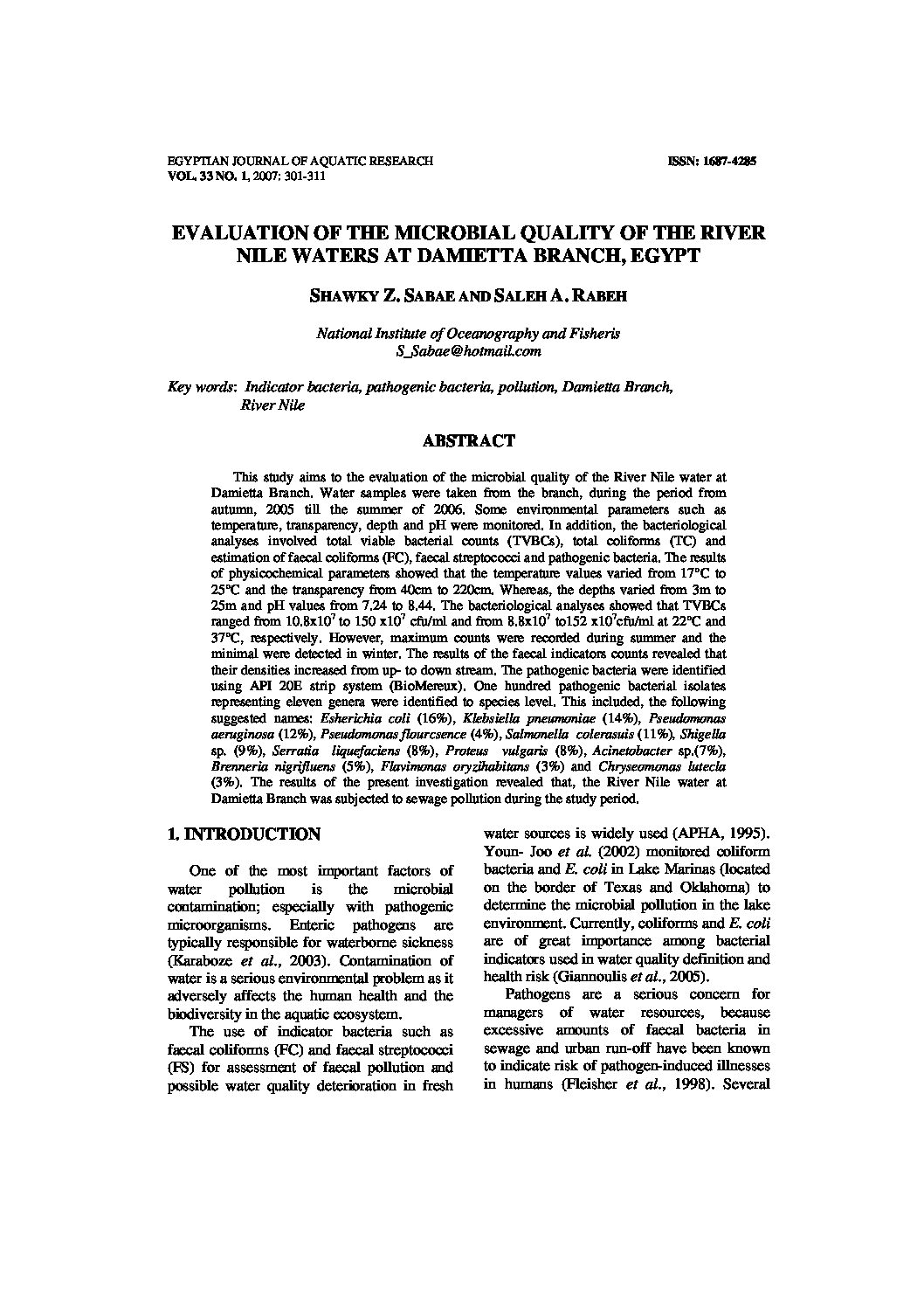Categories
vol-33EVALUATION OF THE MICROBIAL QUALITY OF THE RIVER
NILE WATERS AT DAMIETTA BRANCH, EGYPT
SHAWKY Z. SABAE AND SALEH A. RABEH
National Institute of Oceanography and Fisheris
[email protected]
Key words: Indicator bacteria, pathogenic bacteria, pollution, Damietta Branch,
River Nile
ABSTRACT
This study aims to the evaluation of the microbial quality of the River Nile water at
Damietta Branch. Water samples were taken from the branch, during the period from
autumn, 2005 till the summer of 2006. Some environmental parameters such as
temperature, transparency, depth and pH were monitored. In addition, the bacteriological
analyses involved total viable bacterial counts (TVBCs), total coliforms (TC) and
estimation of faecal coliforms (FC), faecal streptococci and pathogenic bacteria. The results
of physicochemical parameters showed that the temperature values varied from 17°C to
25°C and the transparency from 40cm to 220cm. Whereas, the depths varied from 3m to
25m and pH values from 7.24 to 8.44. The bacteriological analyses showed that TVBCs
ranged from 10.8×107 to 150 x107
cfu/ml and from 8.8×107
to152 x107
cfu/ml at 22°C and
37°C, respectively. However, maximum counts were recorded during summer and the
minimal were detected in winter. The results of the faecal indicators counts revealed that
their densities increased from up- to down stream. The pathogenic bacteria were identified
using API 20E strip system (BioMereux). One hundred pathogenic bacterial isolates
representing eleven genera were identified to species level. This included, the following
suggested names: Esherichia coli (16%), Klebsiella pneumoniae (14%), Pseudomonas
aeruginosa (12%), Pseudomonas flourcsence (4%), Salmonella colerasuis (11%), Shigella
sp. (9%), Serratia liquefaciens (8%), Proteus vulgaris (8%), Acinetobacter sp.(7%),
Brenneria nigrifluens (5%), Flavimonas oryzihabitans (3%) and Chryseomonas lutecla
(3%). The results of the present investigation revealed that, the River Nile water at
Damietta Branch was subjected to sewage pollution during the study period.







